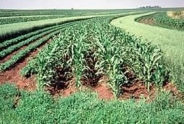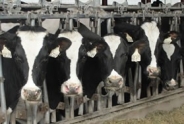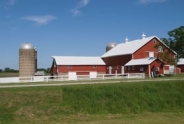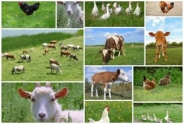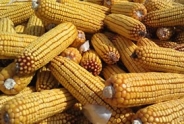Creating Consumer-Friendly Bulk Meat Sales
Amy Barkley, Livestock Specialist
Southwest New York Dairy, Livestock and Field Crops Program
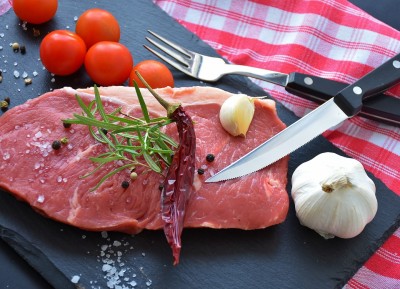
Creating Consumer-Friendly Bulk Meat Sales
Original presentation given on May 4th and 13th, 2020 by Matt LeRoux
When selling bulk meats to consumers in an approachable, fair, and easy-to-interpret format, there are five main factors to consider. 1.) Understanding the customer, 2.) Creating the product, 3.) Pricing, 4.) Selling & delivering, and 5.) Reaching consumers. The combination of understanding both the product that you are selling and who, ideally, you'd like to market that product to is a set-up for success.
Understanding the Consumer and Creating the Product
The first step in the direct marketing process is to evaluate the product you have. Is it something that a consumer would want, and who is that consumer anyway? It would be really easy if marketing products broadly to the entire population was all there was to getting your farm name and product out there. However, this is the least effective way to market, and may not bring in the greatest returns. The best approach is to target one customer group and develop strategies to market to that specific group. Each customer has different needs, motivations, desires, and buying habits. For example, in the COVID crisis, the consumer making purchases from a farm as part of their product procurement plan wants to secure a long-term, local, socially distanced supply of high-quality meat to feed their family. These consumers, dubbed, "crisis buyers" need to be brought into the fold of a typical consumer for a farm enterprise. At this time, these buyers are making up the majority of new direct market customers.
Some people may know that buying meats in bulk from farms is an option, but they may not understand how to reach out. This is where a farm must make the effort to reach out to them. The first step of consumer outreach is to develop a farm business model and strategy statement targeting a specific consumer group. Understanding your product and claims as well as target customers' activities, demographics, and typical behaviors will help to find a targeted consumer group that's the right fit. Developing a farm business model can be as simple as writing a sentence down on a scrap of paper and modifying it until it really reflects the farm's marketing goals. This sentence will guide marketing decisions. Producers selling meats are selling a wholesome, nutrient-rich, local products. Taking a moment to understand an audience will not only allow for sales of product now, but can help foster relationships which will continue sales for the long-term.
While developing a business plan, it's important to consider processing rules and how they may impact that plan. There are two options for getting animals sold and processed: USDA and custom exempt. USDA is the most flexible of the two options, where meats can either be pre-sold or sold after the animal is processed, and can be sold as sides, bulk, halves, or quarters, bundles, or combo boxes of individual cuts. Custom exempt processing only allows for the sale of the animal prior to slaughter, where taking the animal to the processor is a service provided to the purchaser. In the case of custom exempt processing, farms are limited to selling whole animals, sides/halves, quarters, or bulk boxes. The tradeoff here is that custom exempt plants typically have shorter waiting lists for processing times vs USDA plants. If selling poultry under a NYS 5-A grower exemption, up to 1,000 broilers or 250 turkeys can be grown and processed on-farm, or the birds can be taken to a local 20,000 bird exempt processor to be processed. Birds can be sold as whole birds or cut up.
With so many options for buying traditional wholes, halves/sides, and quarters, a new customer can easily become overwhelmed. This is where developing consumer-friendly bulk sales strategies can come into play. Five strategies are provided below.
- When a consumer asks about price, share what the total price for the whole, quarter, or half/side will be using the total cost/lb including processing. The details including price/lb live, percent loss, kill fee, and cutting/wrapping fee is too much information at once, and should be shared only once the customer is comfortable with the price per pound.
- Offering "split-side" quarters is an option for consumers who want cuts from the front and rear halves of the animal, but only want a quarter's worth of meat. Keep in mind that both customers getting the split side must decide on the distribution of cuts.
- Blank cut sheets are great for customers who know exactly which cuts they'd like, but for a new customer, it's easier for them to choose between a series of two to three pre-set cut sheets. It is likely that they are not yet ready to choose between a one inch or one and a half inch cut steak or how much ground they should be requesting to get the best value from their cuts.
- Sending an animal to the processor and then having that customer pick up their meat from said processor misses an opportunity of what can be a crucial step in building the buyer-seller relationship. To a new customer not familiar with the process, contacting a third party for pick-up may be off-putting. Until a relationship between farmer and buyer is established, calling the processor and picking up meat to distribute to the consumer should be considered.
- Some customers who are new to bulk meat sales may be uncertain as to why they only received 65% - 80% of the carcass weight back in wrapped cuts. Farmers can share the fact sheet, "The Butcher Kept Your Meat?" from Penn State Extension to help explain dressing percentages and why it isn't likely that the butcher kept any of their meat. https://animalscience.psu.edu/extension/meat/pdf/The%20Butcher%20Stole%20My%20Meat.pdf
Pricing, Selling, and Delivering
Pricing meat should be done in order to ensure the farm covers its costs and makes the profit it intends to while providing a fair price to the consumer. The most fair way to price an animal for the farm and the consumer is by hanging weight, since bone out orders are going to penalize the farmer. Furthermore, the majority of processors already charge by hanging weight, so pricing bulk meats this way is helpful for potential customers who want to compare price, among other things, across farms. Keep in mind that value added services such as smoking or curing are going to cost more/lb.
If a farmer has some processing experience and understands live vs boxed weights, they can price the animals by fixed weight quarters (or sides for lambs, goats, and pork), rather than pricing after seeing exact animal dressing weights. Doing this gives the customer advanced notice of the exact weight and price for the portion of the live animal they are buying. In this case, providing a fixed cut sheet which describes which and the approximate weight of cuts the consumer will get is helpful. Because not every animal will weigh the same, ground meat from the sold animal can be used to either raise the weight or bring it back down to the weight that the consumer was sold. This is legal under the "custom exempt" status.
Bulk bundles are another option for sellers, but the animals need to be processed in USDA inspected plants, since individual cuts of meat are being sold. This method allows the combining of low and high value cuts in the same bundle to help more evenly reduce inventory. Another option is to create assembled quarters, where a number of cuts are put together to equal a side, quarter, or half. Mixed species bundles are also an option here. This is the most consumer-friendly bulk method, but takes the most time for the farm.
With all of options available for selling meats, focus must be brought back to the consumer a farm is targeting, and the amount of effort a farm wants to invest in preparing meats for sale. When ranked on the level of consumer friendliness from least to most friendly, options for selling cuts line up as: traditional 1/2s or quarters < set cut sheets < fixed weight quarters < assembled quarters < bulk bundles. Time invested by the farmer follows the same trend, with traditional 1/2s and quarters being the lowest investment and bulk bundles being the highest. There is an advantage here in that as a farmer takes on higher inventory management and time spent marketing, they will receive an appropriately scaled monetary return.
Pricing is an important part of what makes a business profitable. There are many aspects of pricing that should be considered when pricing a carcass. The cost of production, which includes all costs on the farm to produce that animal, what you want your production profit to be per head, the trucking/pick-up delivery costs/head, kill fee, and cut and wrap charges, is a good place to start. Marketing costs and time should also be accounted for by estimating an hourly rate for the person doing the marketing and then by estimating the number of hours it takes to complete marketing per animal. The next step is to develop a marketing profit, which is essentially the added costs incurred by raising and retaining the animal on the farm, calculated as a cost per head, which is separate from and in addition to the cost of production. All of these costs added together will result in the minimum return for an animal's HCW (hot carcass weight). Cornell has a meat price yield calculator located at http://calculator.meatsuite.com/ to assist in the development of prices for carcasses and cut price lists (for creating bundles or selling individual cuts). To use this tool most effectively, actual data from the farm must be used.
If the price per pound is calculated to be more than what a farm expects people are willing to pay, it's important to realize that not all consumers are buying on price. Some may be buying on the value added aspect of buying from a local farm or for a product that is grass fed, grain finished, etc.. For example, the difference between $4/lb ground beef and $8/lb ground beef is a result of the farm's target market identification, marketing strategy, marketing time, and consumer communication. The most time invested has the highest potential to result in the most profit.
Taking orders can occur in many ways including by phone, text, email, or an integrated online ordering system such as Squareup.com or Shopify.com. By phone is the most flexible, with online ordering and payment being most complex. Make sure that the method of taking orders matches the target audience. For example, some audiences may be intimidated by phone calls, while others prefer them. For those looking to build a website, there are formats available online that are easy to use and take a relatively short time to learn and create.
Payment can be transacted in a variety of ways. Taking a deposit is a good idea to protect a farm from someone potentially backing out, and it keeps the customer more attentive as to what's going on with their order. Another option is "one payment, one price", where the farmer pays the processor for the customer, and then has the customer pay them back. Cash, check, email invoices, and integrated online ordering systems are all options that can be offered. Depending on the demographics of consumers you wish to target, paying cash may be the best option, while online transactions (typically paired with online ordering) may be another.
Getting the meat to the consumer is the final step in the process. Again, there is a list of options, ranging from least to most involved. These options are ranked as: the customer picks up cuts from the processor < the customer picks up the cuts from the farm < the customer meets the farmer at a central distribution point < the farmer delivers the cuts to the consumer's home < the farmer employs a partner delivery system to deliver the cuts to the customer < the farm sets up delivery within an appointment time or window. As the delivery process becomes more involved, so do the associated costs. This can be included in the price/lb and advertised as a value-added service, or it can be charged as a delivery fee.
Reaching the Consumer
When communicating with customers, especially new ones, be courteous and patient. Answer their questions in easy-to-understand language, saving the jargon for talking with more experienced buyers. Not providing too much information can make a sometimes-intimidating large purchase of a new product more approachable and comfortable. Don't oversell your product, provide misleading information, criticizing other farms or production methods, or give a sob story to make someone buy from your farm; chances are that a consumer may be fooled once, but will lose trust and respect pretty quickly. Building consumer relationships takes time to do right, and they are important to maintain to help increase the likelihood of future purchases. Reaching consumers can happen through multiple avenues. Facebook is a very popular advertising platform. Press releases, direct mail, www.MeatSuite.com, and email lists (neighborhood, churches, and community groups) have all been shown to be successful.
Following these guidelines above can result in successful sales of meats for the new direct marketer, and a rewarding experience for a new consumer. Targeted marketing, good communication, fair pricing, and a good product will be reason for a new customer to come back again and again.
For more information, don't hesitate to reach out to Matt LeRoux at mnl28@cornell.edu or Amy Barkley, Livestock and Beginning Farm Specialist with the SWNY Dairy, Livestock, and Field Crops Team at amb544@cornell.edu or (716) 640-0844.
Upcoming Events
WNY Pastureland Conversion & Soil Health Field Day
July 16, 2025
Middleport, NY
Join American Farmland Trust for the Western New York Soil Health Field Day on July 16, 2025, at Zeliff Farm in Middleport, NY, from 9:00 AM-3:15 PM. Learn about pasture conversion, soil health benchmarking, biochar in grazing systems, and best grazing practices. Plus, enjoy hands-on demos with the NY Soil Health Trailer, drones, and cover crops! Check out the attached agenda for more information about the field day and REGISTER HERE. Zeliff Farms is a regenerative beef operation who has recently partnered with AFT on outreach and education to farmers including learning circles and evaluating biochar effects on soil health.
IPM Strategies to Protect Corn and Soybean Seed in NY
July 30, 2025
Hamburg , NY
SWNYDLFC and Cornell IPM are hosting a grower meeting to discuss integrated pest management strategies for protecting corn and soybean seed in New York.
FAMACHA Training for Sheep and Goat producers in Woodhull NY
August 13, 2025 : FAMACHA Training in Woodhull
Woodhull, NY
Join us for a discussion and hands-on training for internal parasite integrated pest management in sheep and goats. Certification is available to all students participating in the workshop.
Announcements
No announcements at this time.

